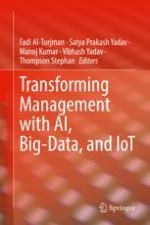2022 | OriginalPaper | Buchkapitel
Trustworthy Machine Learning for Cloud-Based Internet of Things (IoT)
verfasst von : Saumya Yadav, Rakesh Chandra Joshi, Divakar Yadav
Erschienen in: Transforming Management with AI, Big-Data, and IoT
Aktivieren Sie unsere intelligente Suche, um passende Fachinhalte oder Patente zu finden.
Wählen Sie Textabschnitte aus um mit Künstlicher Intelligenz passenden Patente zu finden. powered by
Markieren Sie Textabschnitte, um KI-gestützt weitere passende Inhalte zu finden. powered by
